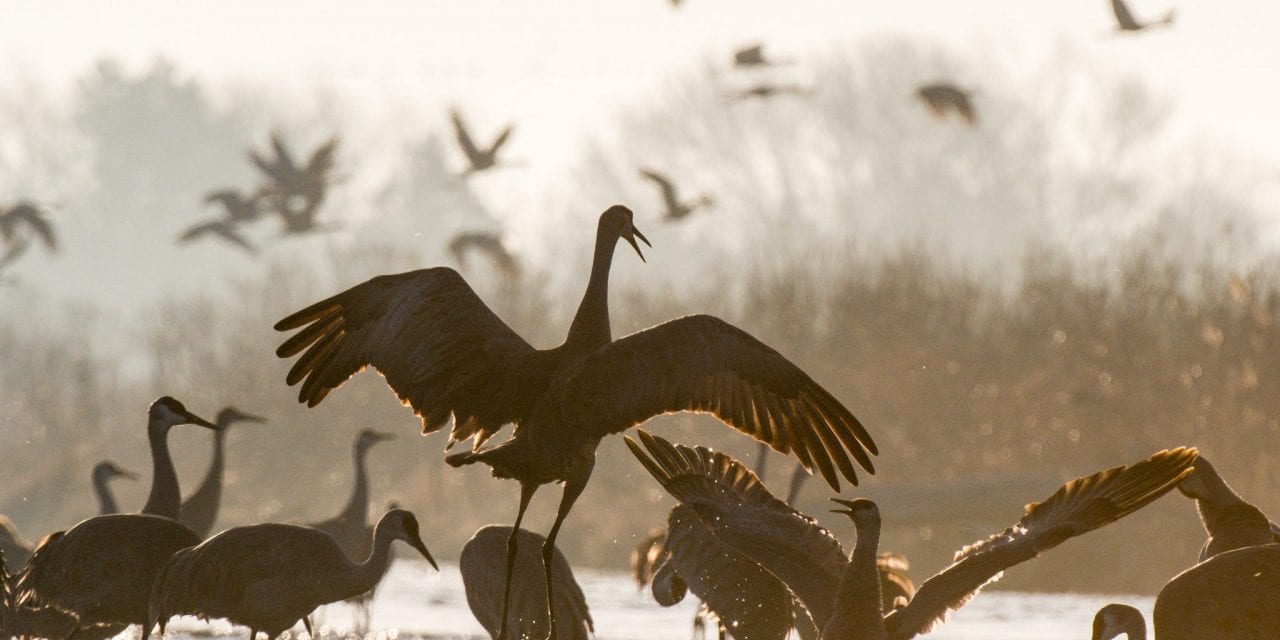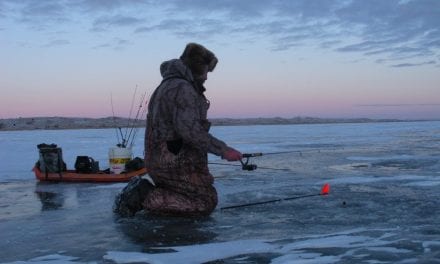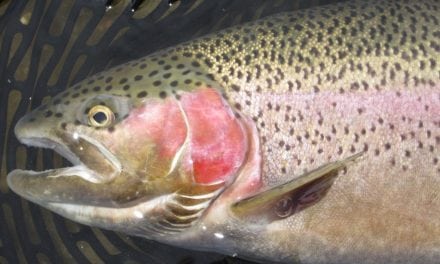Sandhill Cranes Arriving Earlier, Shifting East on Platte
Enlarge
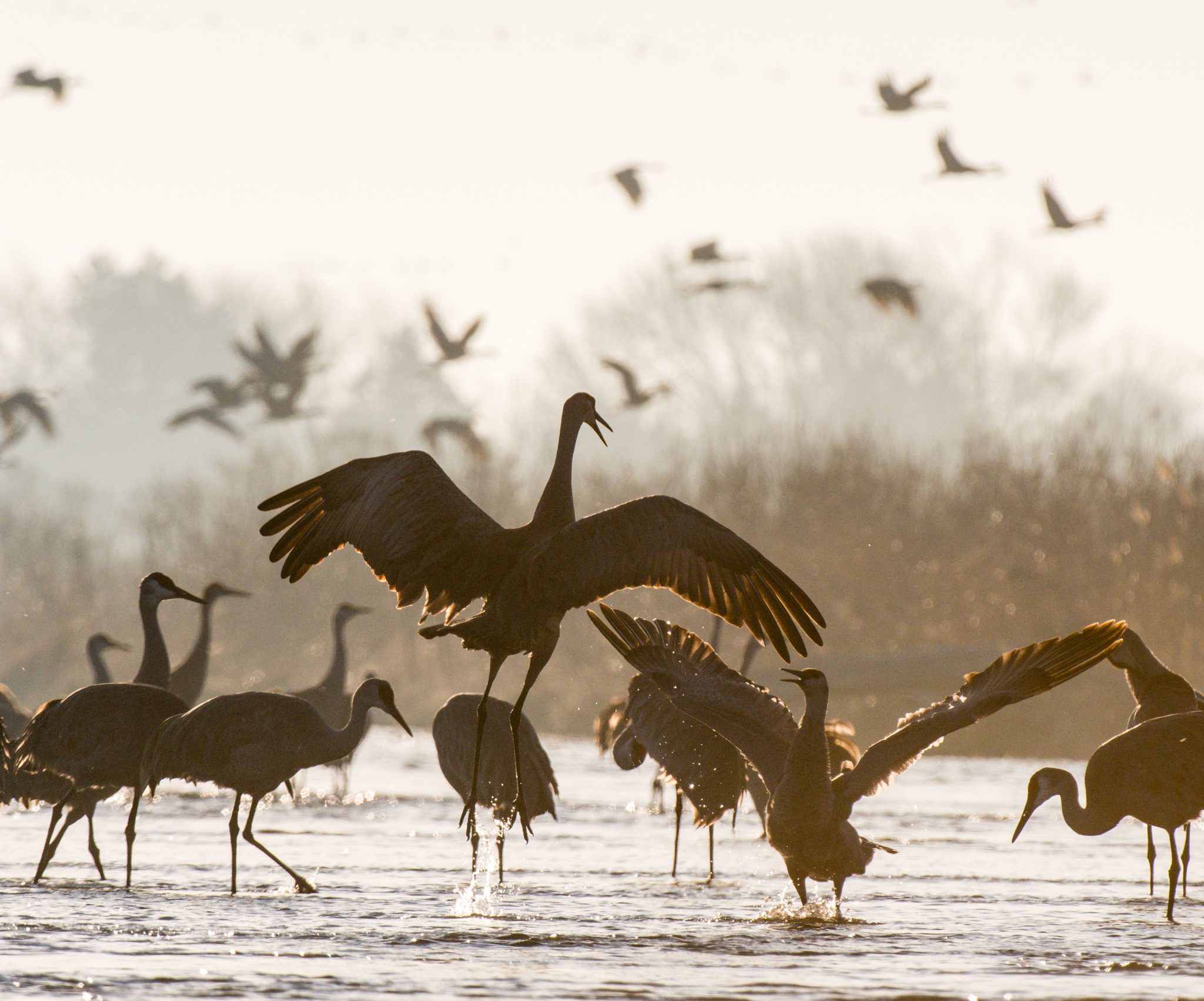
Story and photos by Eric Fowler
Thousands of sandhill cranes will have arrived on the Platte River in central Nebraska by the time you read this. In the weeks to come, there may be 600,000 or more on the river on a given night, with some yet to arrive from their wintering grounds to the south and others having already continued their northward migration. This gathering of more than 80 percent of the mid-continent population of cranes is one of the great wildlife spectacles anywhere, drawing bird watchers from around the world to Kearney, Grand Island and towns in between.
Changes in flows and habitat on the Platte and the availability of food around it during the past century prompted the birds to congregate in a limited number of reaches within the 76 miles of river they now frequent. And according to a new study led by Andrew Caven, director of conservation research at the Crane Trust, the phenomenon is still evolving. Cranes continue to move, leaving behind roosts in the western reaches of the central Platte River Valley for better habitat in the east. The cranes are also arriving earlier and staying longer. With more birds packed into a smaller area, biologists are left to wonder what the future holds.
Cranes and the Platte
Scientists believe sandhill cranes have been stopping on the Platte River during their spring migration for 2 to 10 million years. While records are sparse, the tall, lanky birds are thought to have been dispersed throughout its length in the state before Euroamerican settlers arrived on the Plains. The wide, braided river and its many sandbars provided ideal roosting habitat, and the adjacent meadows held plenty of food in the form of invertebrates.
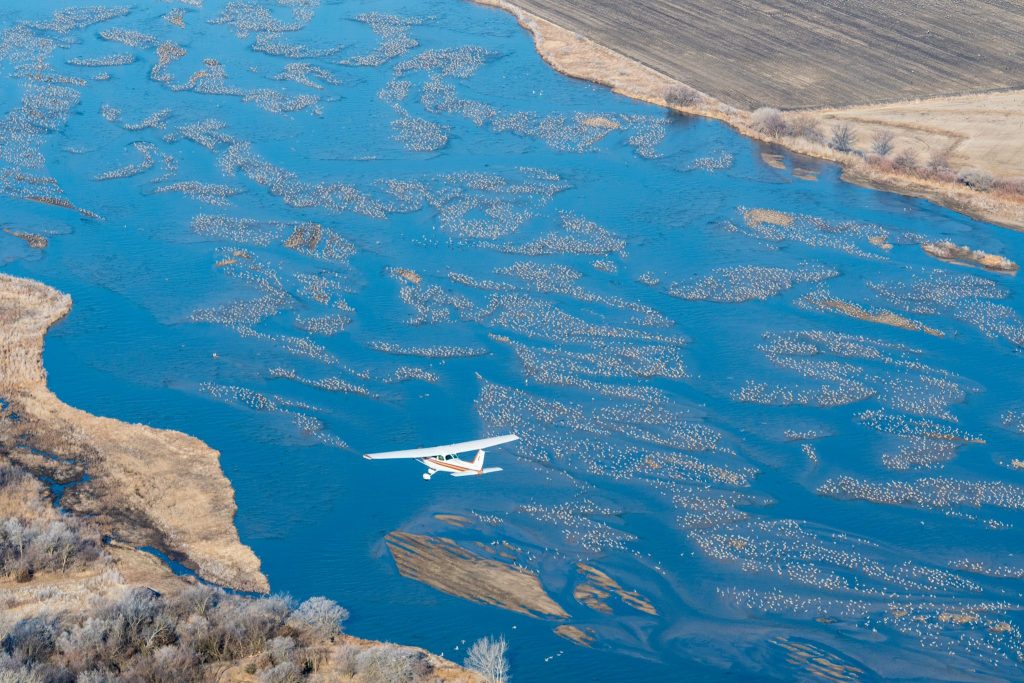
The cranes’ use of the river was likely disrupted by unregulated spring hunting until the practice was banned by the Migratory Bird Treaty Act in 1918. It changed again when settlement brought farming to the Platte River Valley, and corn that didn’t make it into the combine gave cranes a high-energy food source that let them fatten up for the remainder of their journey. Irrigation brought more corn, but it also changed the river. Farmers began digging ditches to carry water to their crops in the late 1800s. Large dams in the basin followed, the first being Pathfinder Dam on the North Platte in Wyoming in 1908 and the last and largest the Tri-County Project, which began operating in 1938 and included Kingsley Dam, completed in 1941, and Lake McConaughy near Ogallala.
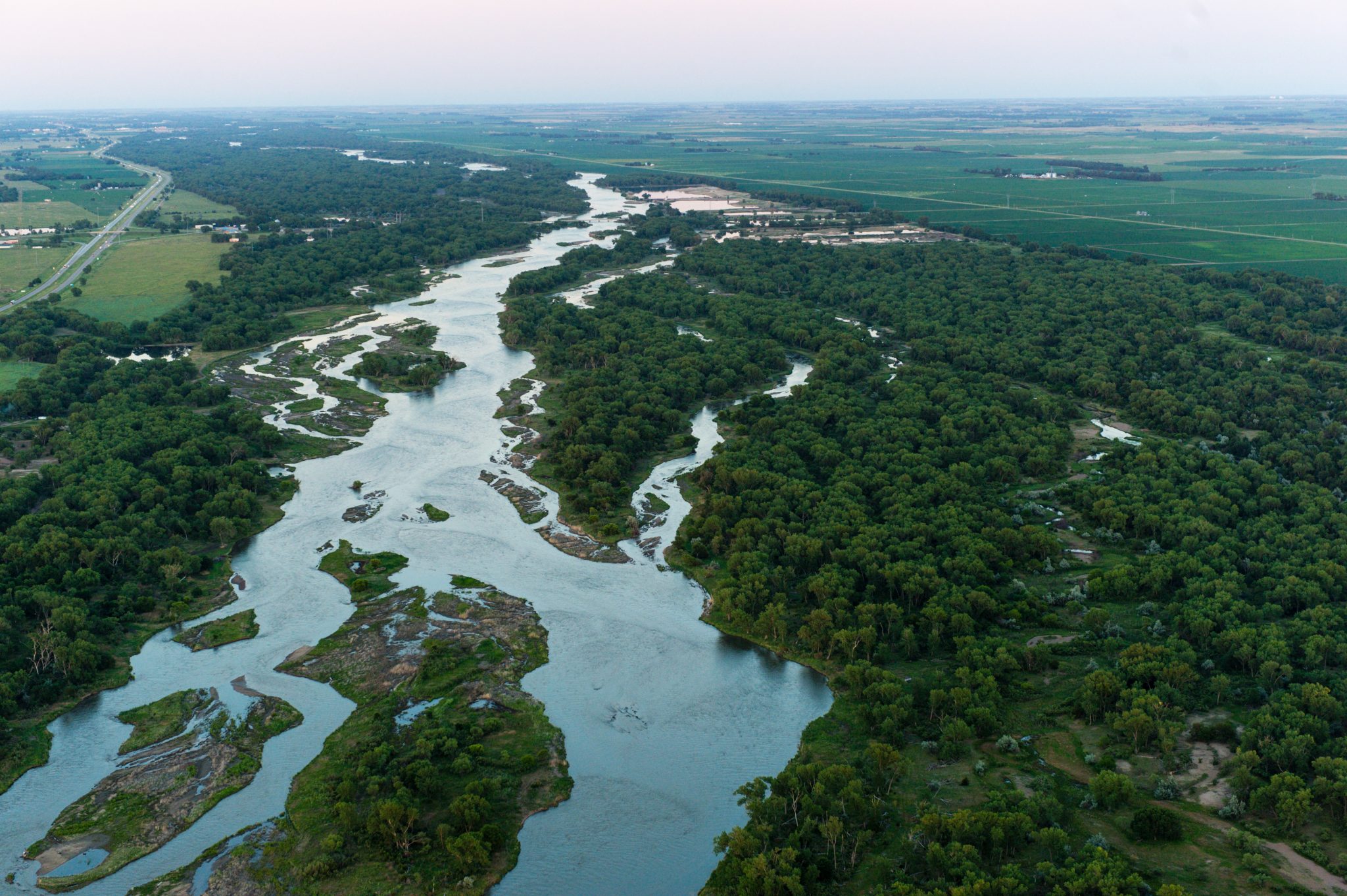
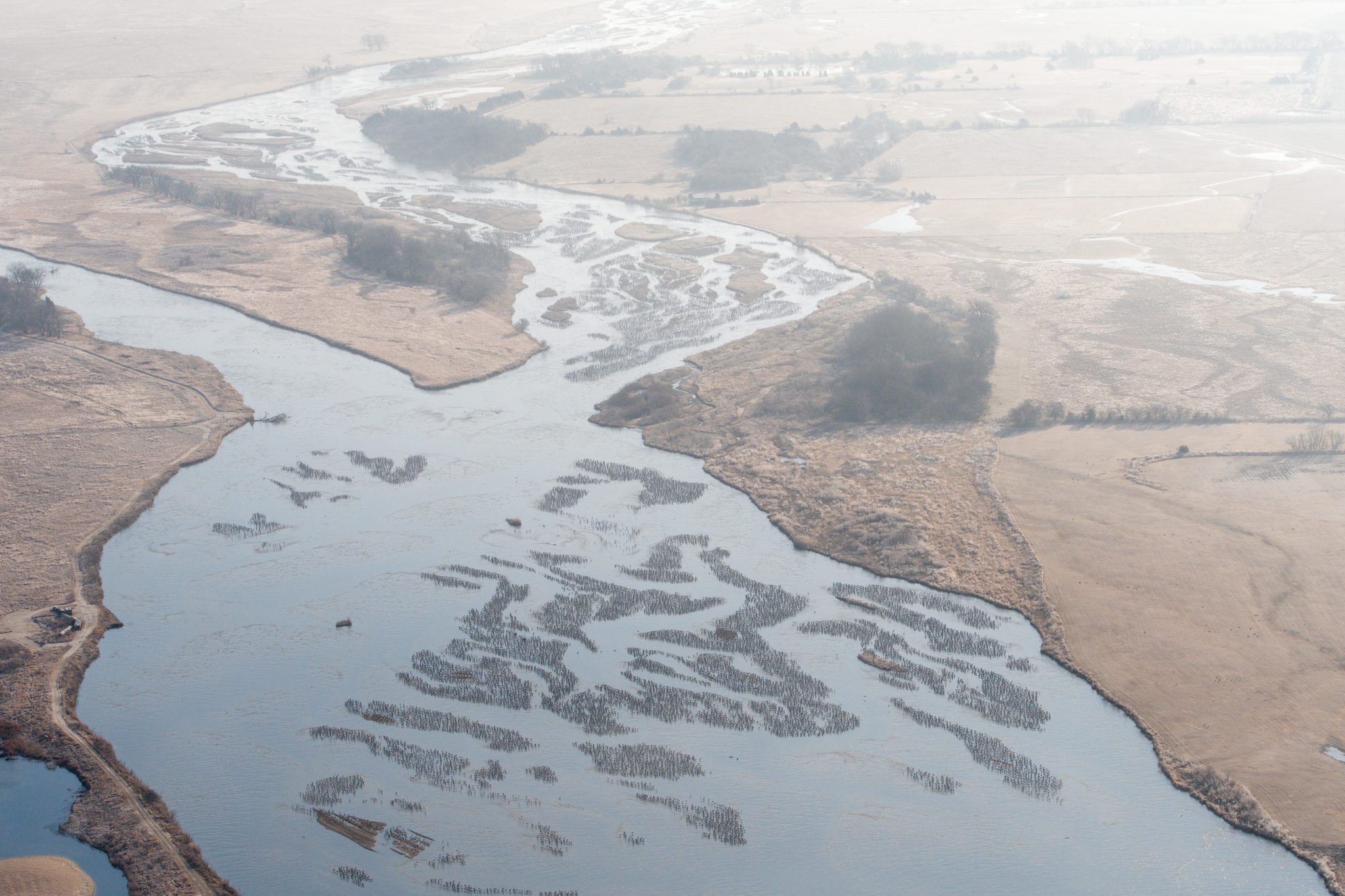 Aerial photos show the stark difference in habitat in two reaches of the central Platte River. Near Odessa (top), nearly all of the forested area pictured was river channel a century ago. At The Crane Trust’s headquarters south of Alda (bottom), the river looks like much like it did a century ago, with both channels retaining their width, little woodland encroachment and much of the surrounding landscape in meadow. While the width of the river channel is similar in these reaches today, the change in character has caused sandhill cranes to abandon the area near Odessa.
Aerial photos show the stark difference in habitat in two reaches of the central Platte River. Near Odessa (top), nearly all of the forested area pictured was river channel a century ago. At The Crane Trust’s headquarters south of Alda (bottom), the river looks like much like it did a century ago, with both channels retaining their width, little woodland encroachment and much of the surrounding landscape in meadow. While the width of the river channel is similar in these reaches today, the change in character has caused sandhill cranes to abandon the area near Odessa.
With each new dam and diversion for irrigation or hydroelectric power, the river dropped, allowing vegetation to sprout on the exposed, moist ground. With high spring flows trapped in upstream reservoirs, there was nothing to scour the river clean. Eventually, what once was riverbed became woodland composed primarily of cottonwoods at first, and later by Russian olive and eastern redcedar, and the remaining flows were restricted to narrower, deeper, and more winding channels.
Described by one journalist in the 1880s as “a mile wide and an inch deep,” the Platte was actually wider in places. Yet by the 1950s, it spanned only 50 yards between North Platte, where most of the water was diverted by the Tri-County project, and Overton, where some of that water is returned.
The succession was not good for cranes, which soon abandoned the river above Overton. As accretion and woodland growth continued to move eastward, so did the cranes. A 1957 study found that 60 percent of the cranes stopping on the Platte in the spring were found between Overton and Kearney. By the late 1970s, most were between Kearney and Grand Island.
The Shift Continues
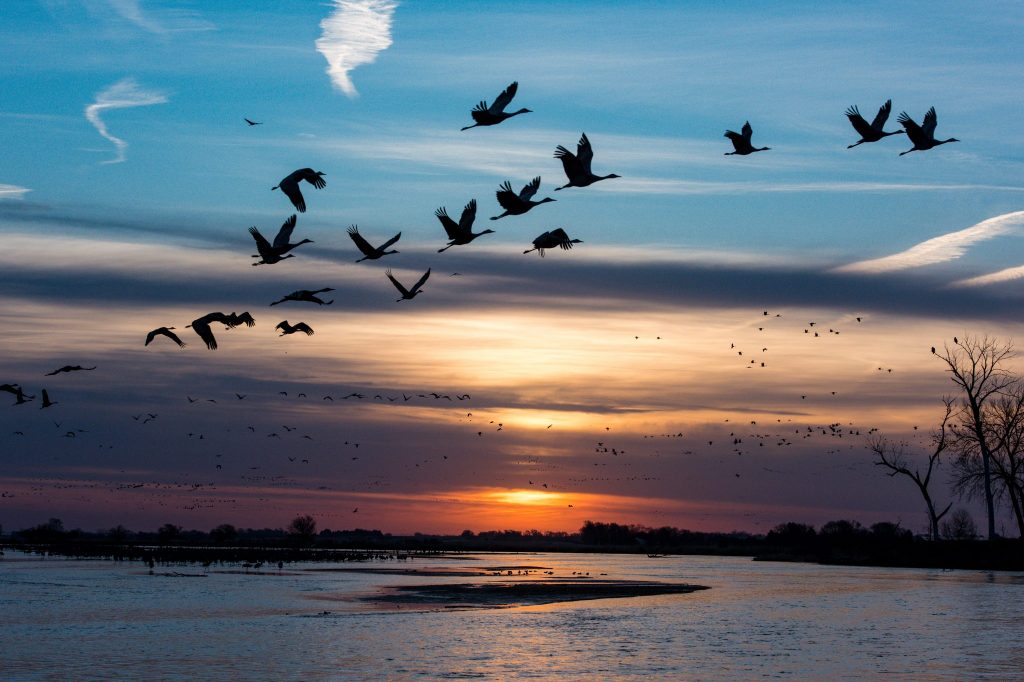
Population estimates of cranes, while an inexact science, have been conducted since the 1950s by various entities, including the U.S. Fish and Wildlife Service, which does an intensive air and ground survey of the valley in late March each year. Since 1998, with the exception of two years, the Crane Trust has from mid-February to mid-April conducted weekly survey flights on the river between Overton and Chapman. The methods used and routes flown have been mostly the same since 2002: From a fixed wing aircraft, observers estimate the number of birds on the river and the adjacent fields and take photographs of selected roosts. Back on the ground, they analyze the photographs and adjust their estimates as needed. Their highest recorded count of 598,000 came on March 22, 2018, a figure that does not account for cranes that left the river for fields farther from the river than observers could count. The service’s count, which reaches farther from the river and continues west through the North Platte River Valley, estimated there were a record 1 million cranes on the rivers during the same week last March.
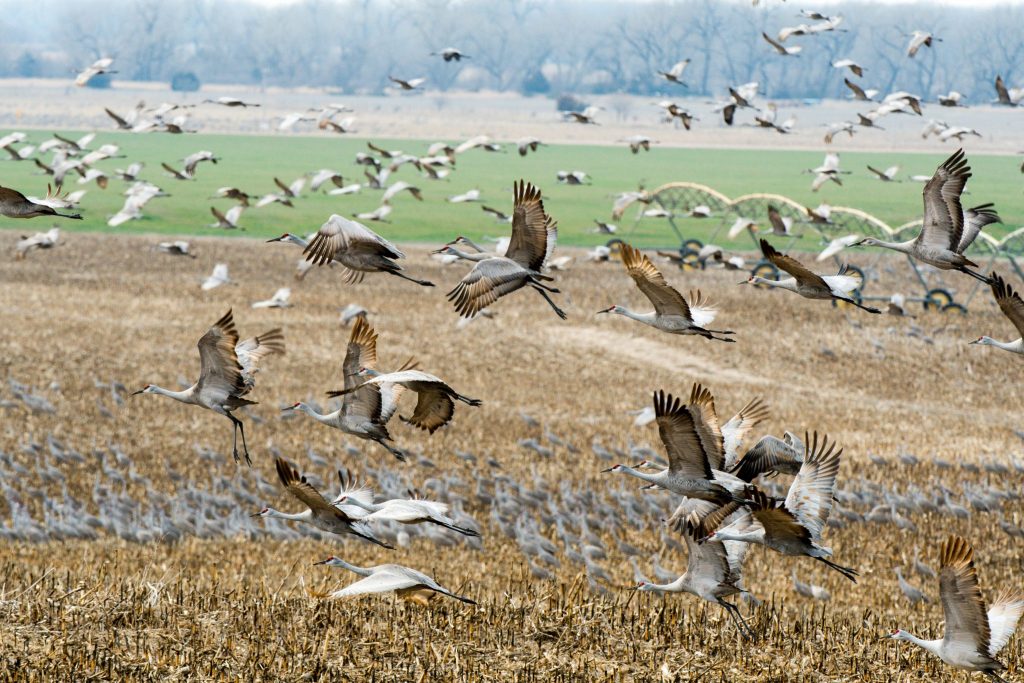
The Crane Trust’s survey data has allowed the shift of cranes from west to east to be quantified in the study, co-authored by Emma Brinley Buckley and others from the U.S. Fish and Wildlife Service, U.S. Geological Service, Rainwater Basin Joint Venture and Platte River Recovery and Implementation Program. The survey area is divided into 11 segments defined by highway bridges. Of those, only the four easternmost segments, from Wood River to Chapman, show increasing numbers of cranes.
Interestingly, the eastern segment, from Highway 34 to Chapman, hosted so few cranes that it wasn’t included in any surveys until the late 1990s. Yet the average count of combined surveys from 2015 to 2017 found 25 percent of all cranes in the central Platte in the two reaches between Grand Island and Chapman.
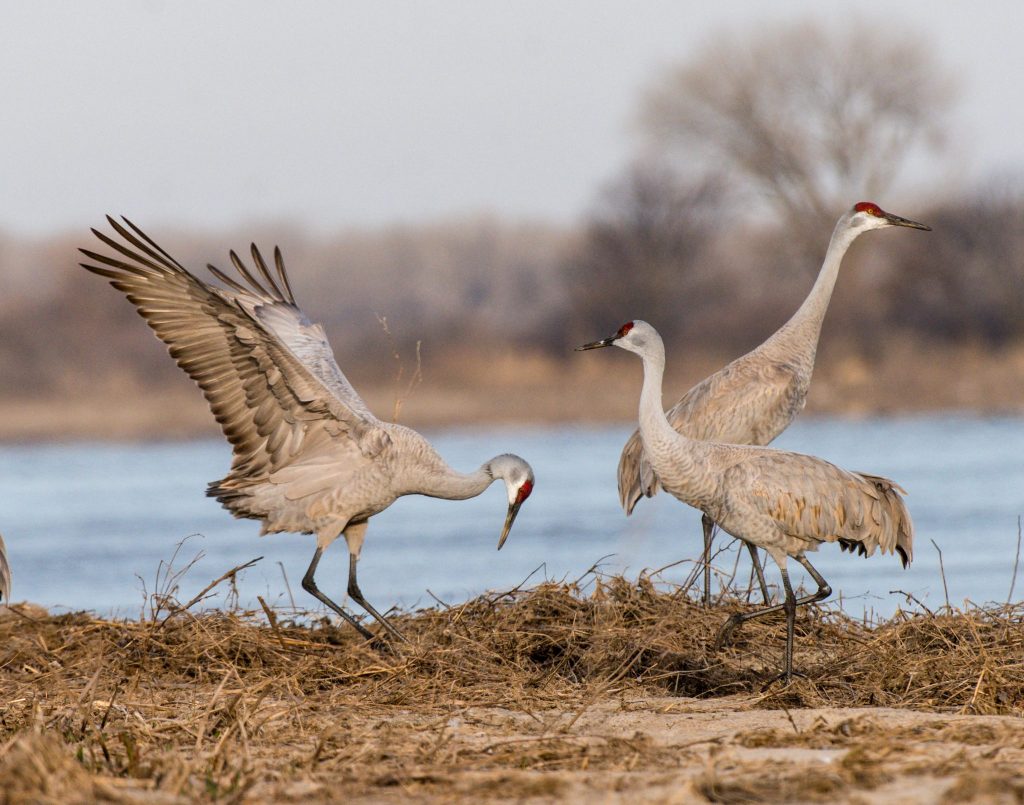
The reach between Alda and Grand Island, where the Crane Trust owns considerable property that has been restored to near-historic form, is the most used segment, boasting a peak density of 6,400 cranes per mile and 32 percent of the count from 2015 to 2017.
At the same time, crane use has generally declined in the four segments west of the Highway 10 bridge (Minden), which hosted just 4 percent of the cranes combined. The three segments between Minden and Wood River host 20 percent of the cranes, but numbers in all are also declining, with the exception of the reach from Minden to Gibbon that includes the National Audubon Society’s Rowe Sanctuary and a considerable amount of restored land and boasts a stable population.
Why Move?
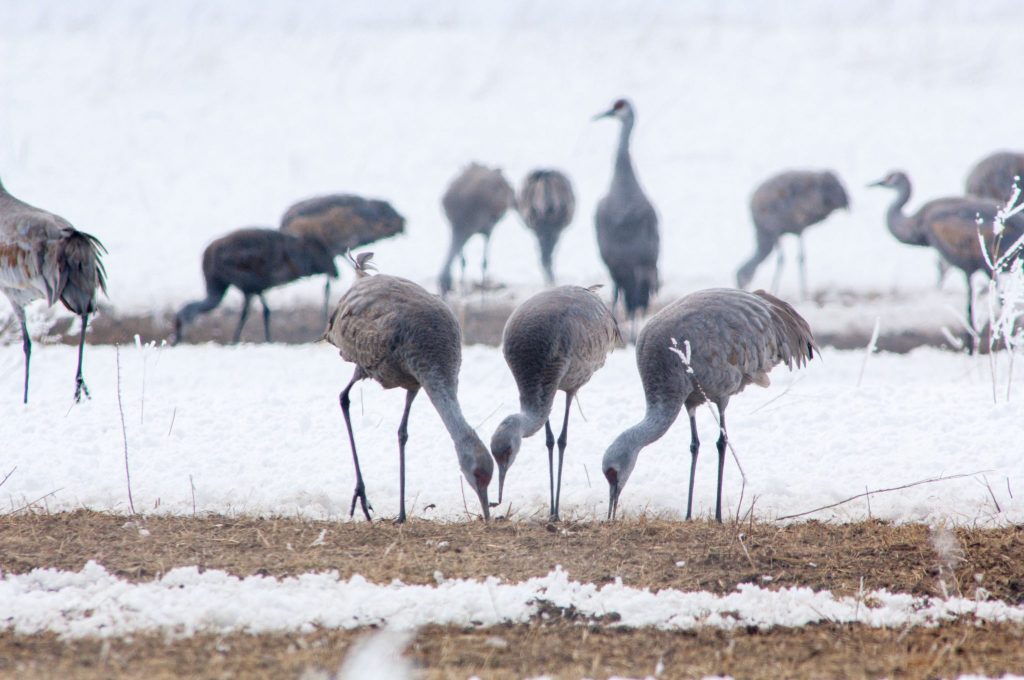
With the eastward shift of cranes quantified, the Crane Trust’s study hoped to determine why they were moving. Using aerial imagery from 1938, 1998, 2015, and 2016, Caven and his team looked at changes in channel width, and with images from 1998 and 2016, he looked at land cover.
“Everyone expected the model to show why wide channels are good and prairie is good,” Caven said. “Well, the model showed that prairie was very good, and it also showed wide channels were good. But what’s more important than just wide channels is the amount the channel has shrunk since 1938, and that was a more important variable in our model, likely because it’s indicative of the change in the character of the river there more than just its width.
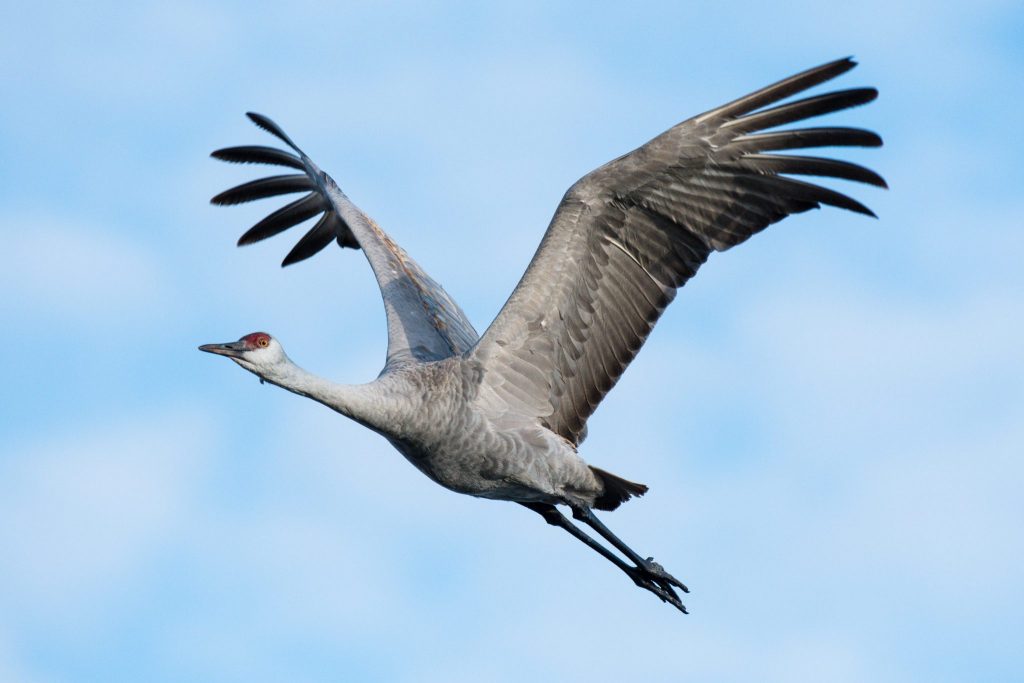 “That change started in the west and moved east. The perception was that the change has stopped, but that’s not the case. We keep seeing more islands popping up in the middle that are becoming stabilized and those are crappy for cranes.”
“That change started in the west and moved east. The perception was that the change has stopped, but that’s not the case. We keep seeing more islands popping up in the middle that are becoming stabilized and those are crappy for cranes.”
The adjacent prairie component of the equation is likely tied to the importance of those habitats, as other studies have found, for the protein provided by macroinvertebrates, for pair bonding activities, and also the cranes’ desire to stage next to the river in the evening, continuing forage until dark before returning to roost.
Early Arrivals?
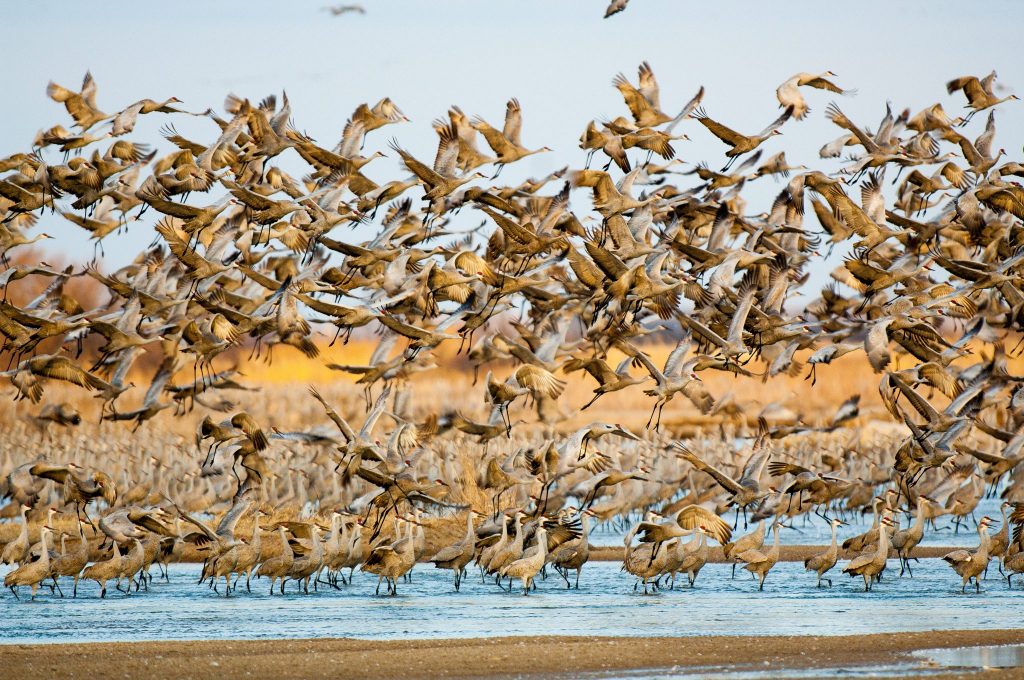 Research suggests that the greater sandhill crane, which nests primarily in Alaska, Canada and Minnesota, is the first to arrive on the central Platte, and fills eastern segments of the river first. The lesser sandhill crane, which nests in Siberia, western-Alaska and northern Canada, arrives later and fills in western portions of the region.
Research suggests that the greater sandhill crane, which nests primarily in Alaska, Canada and Minnesota, is the first to arrive on the central Platte, and fills eastern segments of the river first. The lesser sandhill crane, which nests in Siberia, western-Alaska and northern Canada, arrives later and fills in western portions of the region.
The Crane Trust’s survey data, because it spans the entire timeframe in which the cranes are on the Platte, paints a clearer picture of this staggered arrival, with counts in eastern segments peaking about two weeks ahead of the west. It also shows how the overall peak, which can be influenced by weather, varies from year to year.
The data also showed that cranes have been arriving, on average, a little more than a day earlier each year since 2002. A century ago, the first reports of cranes arriving on the Platte came in late March. Now they come in early February, and a few cranes have even wintered here in recent years.
The study looked at weather in wintering areas on the Texas coast and elsewhere and found it was a fairly reliable predictor in their arrival date. “What’s interesting is a 1 degree average increase in average temperature in Texas in January and February basically meant 20,000 more birds came to Nebraska in week 5 (mid-March) of the surveys,” Caven said.
The advancing migration date is not exclusive to sandhill cranes. Other studies have found that whooping cranes in North America and common cranes in France are also migrating earlier, trends Caven said could be a result of climate change or a combination of many factors, including the availability of waste grain or drought.
“That doesn’t mean that they’re leaving early though,” Caven said. “They’re coming 20 days earlier but they’re staying a little bit longer. So the peak hasn’t changed as much as the arrival date.”
What Now?
 Researchers watching the transformation of the Platte as irrigation expanded recognized the importance of a wide-open river to cranes and other wildlife. Since the early 1980s, the Crane Trust, as well as numerous other organizations, including the Nebraska Game and Parks Commission, The Nature Conservancy, Audubon Society and, more recently, the Platte River Recovery and Implementation Program, have been working to restore and maintain the river’s historic character in the central Platte Valley. The groups have cleared riparian woodlands, restored grasslands and wet meadows and, when the river is low, disked the channel to inhibit growth of vegetation that can form islands.
Researchers watching the transformation of the Platte as irrigation expanded recognized the importance of a wide-open river to cranes and other wildlife. Since the early 1980s, the Crane Trust, as well as numerous other organizations, including the Nebraska Game and Parks Commission, The Nature Conservancy, Audubon Society and, more recently, the Platte River Recovery and Implementation Program, have been working to restore and maintain the river’s historic character in the central Platte Valley. The groups have cleared riparian woodlands, restored grasslands and wet meadows and, when the river is low, disked the channel to inhibit growth of vegetation that can form islands.
Cranes are now concentrated primarily in areas where that work has been conducted. The density, however, has raised concerns about the increased risk of disease transmission between sandhill cranes and other birds, especially whooping cranes. A continued shift of birds from west to east and birds staying longer than the three to four weeks they once did, coupled with an increasing sandhill crane population that is two to three times greater than it was in the early 1970s, could further increase density, making the work to restore habitat along the river even more important.
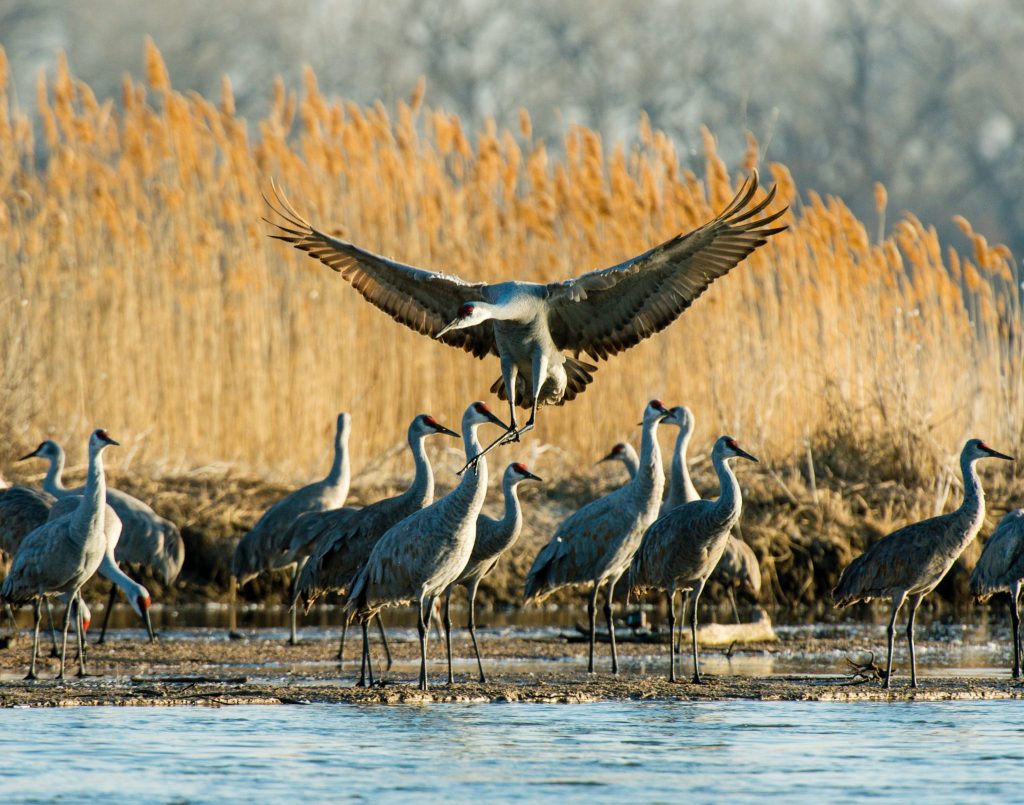 But Caven said conservation partners will need to look at where and how the work is being done, as cranes are even abandoning some reaches of the river where habitat has been restored. While some may be tempted to give up on those areas, maintaining stopover habitat there is critical because of the use of those reaches by whooping cranes.
But Caven said conservation partners will need to look at where and how the work is being done, as cranes are even abandoning some reaches of the river where habitat has been restored. While some may be tempted to give up on those areas, maintaining stopover habitat there is critical because of the use of those reaches by whooping cranes.
“We’re probably not restoring areas that are big enough to redistribute the cranes,” Caven said.
They will also need to look east to insure the habitat the cranes are adopting is maintained. In the two eastern reaches, the character of the river remains good and there is a considerable amount of meadow and prairie. But less than one percent of the land within a half mile of the channel is protected, either through ownership by a conservation organization or through a conservation easement, a pittance compared to the 34 to 67 percent in some other reaches. “Our major concern is sandpits and housing developments,” Caven said, noting that conservation easements that would prevent such development while allowing farming and ranching to continue would be invaluable in protecting the habitat.
The work along the river isn’t important only to cranes. An open, braided river benefits other species like whooping cranes and least terns. The large blocks of prairie benefit prairie chickens, bobolinks, Henslow’s sparrows and other upland species.
“There’s a lot [in this study] of sandhill cranes, but they’re really good umbrella species,” Caven said. “They’re a really good indicator of habitat quality because their presence in high numbers is reflective of the historic structure of and function of that ecosystem.” ■
The post Crane Moves appeared first on Nebraskaland Magazine.

